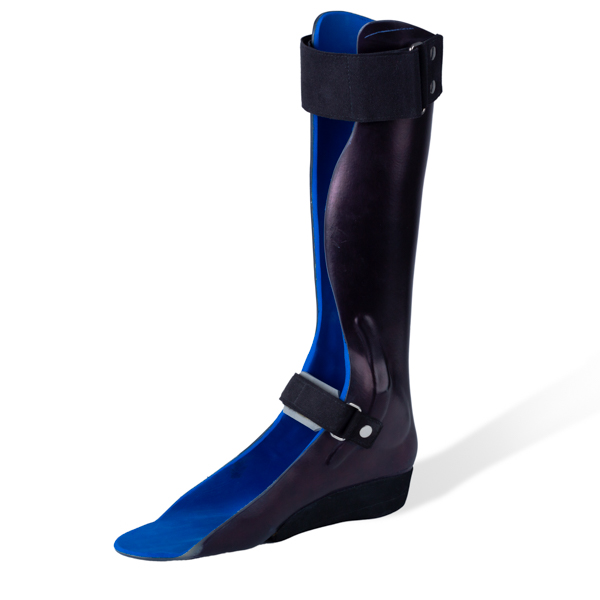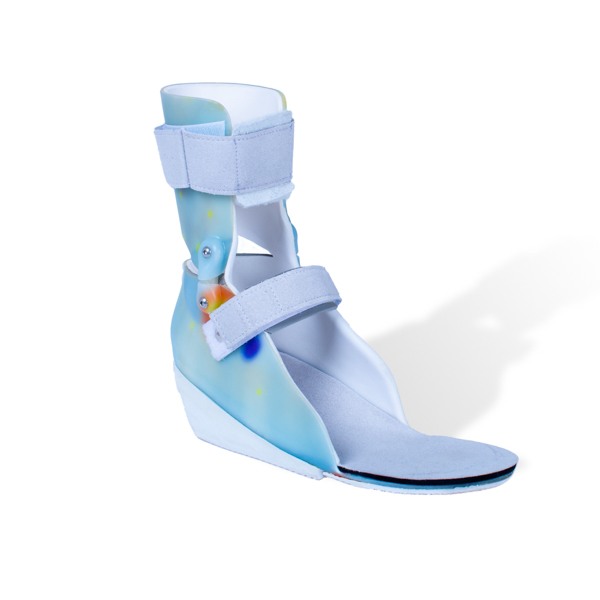
19 August 2024
We're often asked to explain what lower limb orthotics are and what they can do to improve a person’s mobility and reduce pain. Here's a brief summary of some of the most common lower limb devices we prescribe.
Lower limb orthotics are devices designed to support, align, or improve the function of the lower extremities, which include the legs, knees, ankles, and feet. These orthotics can range from simple foot inserts to complex braces that extend from the foot up to the thigh or even the waist.
Lower limb orthotics are used for a variety of medical and rehabilitative purposes and are often prescribed by healthcare professionals like orthotists, physical therapists, or orthopaedic surgeons.

Fixed Ankle Foot Orthosis (AFO)

Hinged Ankle Foot Orthosis (AFO)

Hinged Supramalleolar Orthosis (SMO)

Carbon Fibre Knee Ankle Foot Orthosis (KAFO)
Read about how a Reciprocating Gait Orthosis helped get our patient Ted back on his feet again.

Reciprocating Gait Orthosis (RGO)
Lower limb orthotics serve several important functions depending on the condition being treated:
By improving alignment and reducing pressure on specific joints, orthotics can alleviate pain in the knees, hips, and lower back.
Athletes or individuals at risk of injury may use orthotics to prevent conditions like sprains, stress fractures, or overuse injuries by ensuring proper joint alignment and function.
Orthotics enable people with physical disabilities to achieve better mobility, enhancing their quality of life. For example, a person with drop foot (or foot drop) might use an AFO to help lift the foot while walking, preventing trips and falls.
Lower limb orthotics are essential tools in the management and treatment of a wide range of conditions affecting the lower extremities. They help in providing stability, correcting deformities, relieving pain, and improving overall mobility.
At the London Orthotic Consultancy, an essential additional ingredient to the design and fine-tuning of our bespoke orthotics is our gait laboratories. Also known as a video vector gait laboratory or motion analysis laboratory, our gait labs provide precise and detailed measurements of joint angles, muscle activity and ground reaction forces. All of which are important for understanding and improving a patient’s gait patterns. The data produced helps us to objectively measure a patient’s progress over time.
If you would like to know if bespoke orthotics can help you with your mobility goals, contact us to book a free consultation with one of our orthotists.